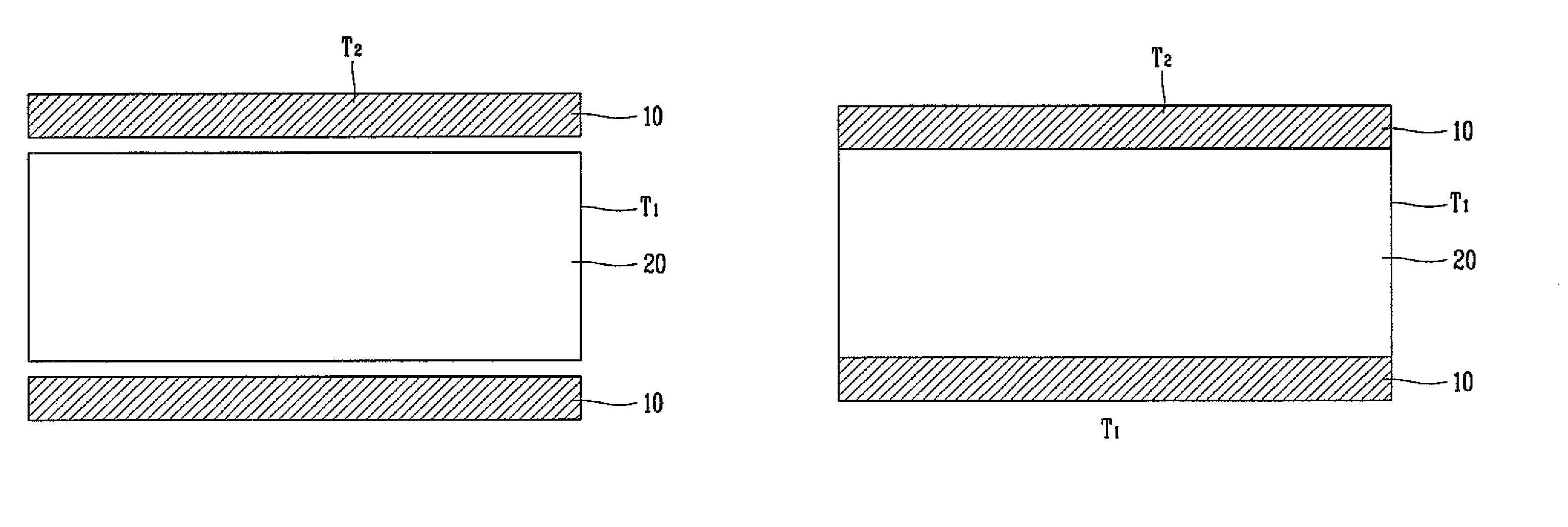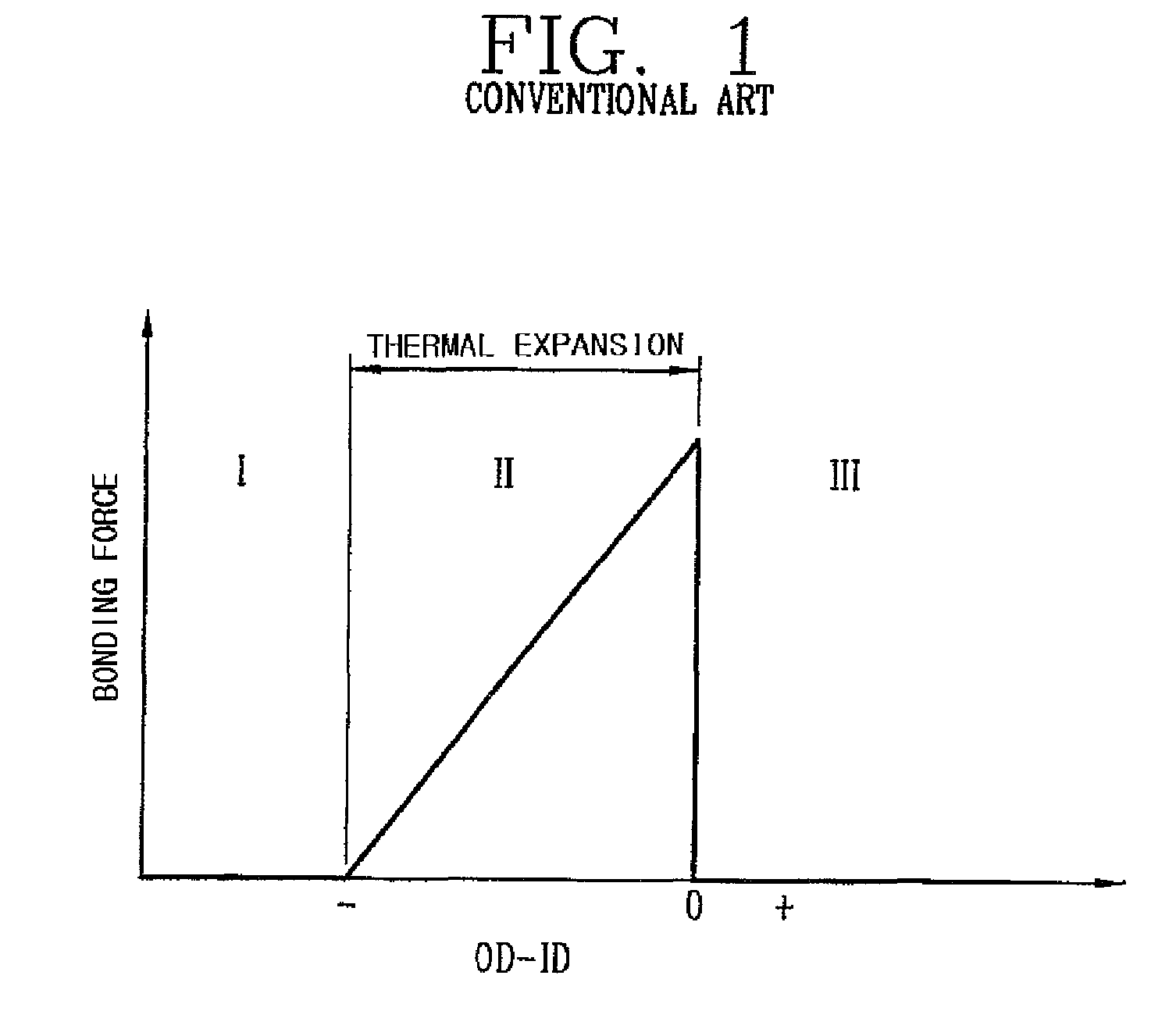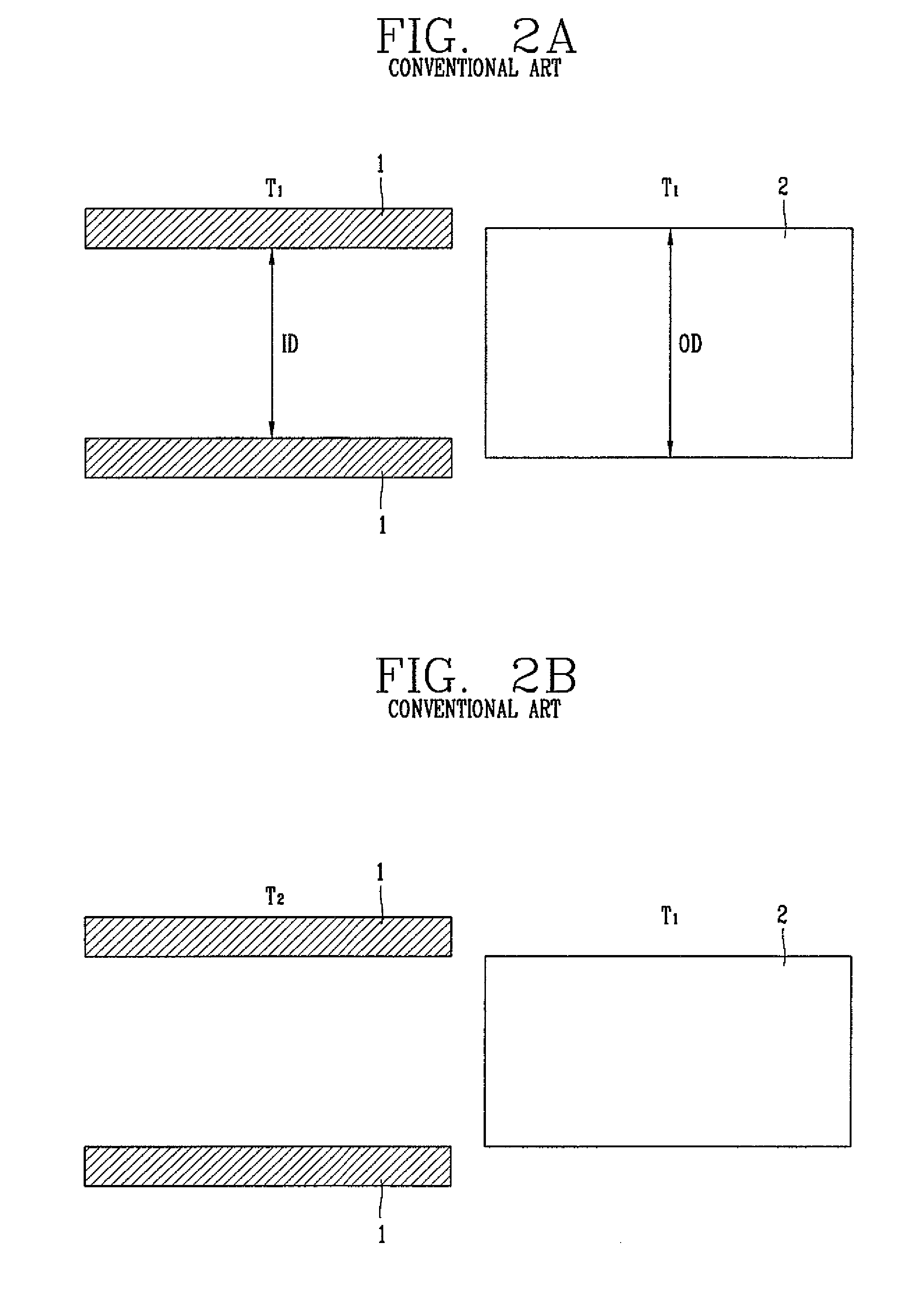Shrink fitting method including deformation
a technology of shrink fitting and deformation, which is applied in the direction of non-disconnectible pipe joints, manufacturing tools, couplings, etc., can solve the problems of inability to widely use shrink fittings for general industrial parts, difficulty in practical use due to accuracy, and simple shrink fitting principles
- Summary
- Abstract
- Description
- Claims
- Application Information
AI Technical Summary
Benefits of technology
Problems solved by technology
Method used
Image
Examples
example 1
Pipe Bonding 1
[0046]If welding is used for bonding between pipes, it is likely that a defect occurs to cause breakdown, and process steps are complicated to cause expensive cost.
[0047]Also, since metals having high reactivity, such as titanium, require welding condition, technical difficulty exists. Accordingly, a mechanical bonding method that does not require welding can be widely used for bonding between pipes.
[0048]However, since most of mechanical coupling parts have complicated structures, are expensive, and have difficulty in sealing, it is difficult to use them at high pressure. Although a method of bonding pipes using a shape memory alloy is being developed, this method is not generally used because the cost of the alloy is expensive and sealing is not solved.
[0049]It is generally known that the industrial pipe has a diameter error in the range of 2% considering the genuine circle. Since the diameter of the industrial pipe is varied in the range of 0.5% due to thermal expan...
example 2
Pipe bonding 2
[0058]Pipe bonding can be used for the case where the coupling 50 is inserted into the pipe 30.
[0059]Referring to FIGS. 5A to 5E, the coupling 50 is prepared to have an outer diameter smaller than an inner diameter of the pipe 30 heated at T2 (FIG. 5A). Then, the end of the pipe 30 is heated (FIG. 5B) and the coupling 50 is inserted into the pipe 30 (FIG. 5C).
[0060]If the diameter of the pipe 30 is reduced so as not to generate a gap between the coupling 50 and the pipe 30 (FIG. 5D), the pipe 30 is cooled at T1 to generate a strong bonding force F with the coupling 50 (FIG. 5E).
[0061]It has been described that the coupling 50 is heated in the example 1 referring to FIGS. 4A to 4D while the end of the pipe 30 is heated in the example 2 referring to FIGS. 5A to 5E. To increase the difference in temperature between the pipe 30 and the coupling 50, it is more effective that the end of the pipe 30 should be cooled in the example 1 while the coupling 50 should be cooled in t...
PUM
| Property | Measurement | Unit |
|---|---|---|
| shrink fitting | aaaaa | aaaaa |
| outer diameters | aaaaa | aaaaa |
| inner diameter | aaaaa | aaaaa |
Abstract
Description
Claims
Application Information
 Login to View More
Login to View More - R&D
- Intellectual Property
- Life Sciences
- Materials
- Tech Scout
- Unparalleled Data Quality
- Higher Quality Content
- 60% Fewer Hallucinations
Browse by: Latest US Patents, China's latest patents, Technical Efficacy Thesaurus, Application Domain, Technology Topic, Popular Technical Reports.
© 2025 PatSnap. All rights reserved.Legal|Privacy policy|Modern Slavery Act Transparency Statement|Sitemap|About US| Contact US: help@patsnap.com



